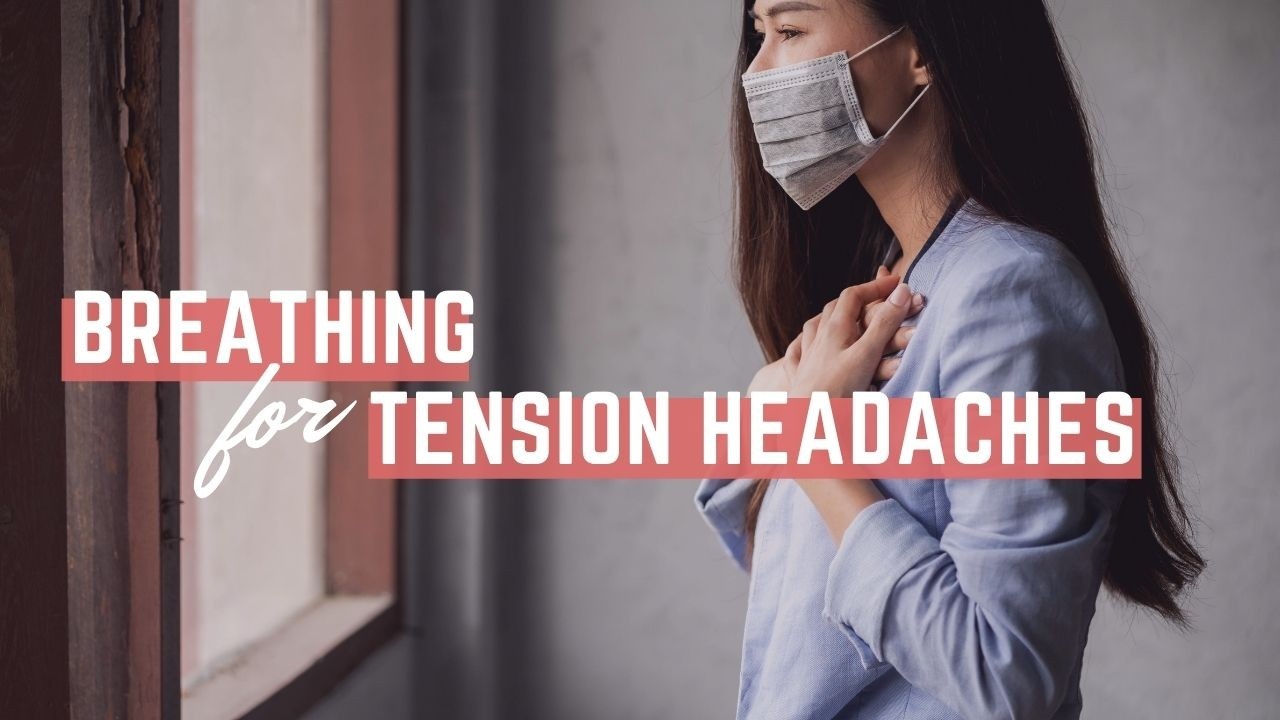
Breathing for Back Pain & Tension Headache Relief
Mar 30, 2021Oh hello…it's Amanda - Annie has passed the reins off to me this week and we are going to GEEK OUT on some science this week.
Do you love running? Love Kettlebells? Love to hate both running and kettlebells because of the sneaky little back pain that takes over a few days after? Yeah me too..
How about just life is hectic and crazy and the mere thought of that next zoom meeting triggers your headaches?
With all the work you do in classes and your training sessions have you ever considered that your breathing patterns may be sabotaging your progress and indeed, triggering your next pain response?
Take a seat.
Place your hand on your belly and your other hand on your chest. (I’d tell you to close your eyes...but...you’re reading…)
Take a deep breath in through your nose and breathe out through your nose.
Do it again….
Now I have some questions for you.
- Did your chest noticeably move either more or as much as your belly?
- Could you hear your breathing?
- Did you take in so much air that you wouldn’t be able to fit in any more with that breath?
- Were you thinking of something other than your breath?
- Have you sighed at all in the past 20 minutes?
If you answered yes to any of those questions, I have bad news for you: your back pain and tension headache are not going away any time soon.
The thing about breathing is that it’s primary function is to bring oxygen to your cells, the ones in your back, your brain and your toes. Yes, of course, we can harness the power of breath to help our running training and kettlebell training, however, we breathe ALL the time. See, you just did it! So breathing for sports performance is just one tiny, teeny little aspect of your respiratory health.
So, let’s go into how oxygen gets from outside your body and into your cells. We let it travel down the bloodstream superhighway. Oxygen gets to travel in these super cool cars, well, proteins, called Hemoglobin.
When the Hemoglobin gets to the cells to kick out the oxygen there needs to be an actual need for oxygen. So if the cell is full, well, the oxygen is just going to go for a longer ride.
This is where Carbon Dioxide comes into play. When your cells do the things cells do they use oxygen and the byproduct is Carbon Dioxide. And Voila! Hemoglobin unloads the oxygen and picks up a new passenger to get to the outside world, for trees.
Cool, cool, we get this. So, how does breathing come into play? Well, what happens when you have too much oxygen? Over breathing over oxygenates our bloodstream and decreases the efficiency of the gas exchange to your working muscles. Which leaves you feeling stressed, low energy and kicks in those trigger warnings. Back pain. Tension headaches.
Annoying right? Especially when we have always been told to just take a deep breath. Well, here’s the good news. That advice is not wrong. We’ve just been confusing “deep” with “big, tall, vertical.” I’m going to encourage you to replace your concept of “deep” with low, light and slow.
Let’s try again.
I assume you are still seated (if not -- plop down for a sec) so just place your hands back on your belly and your chest. I’d like you to sit tall and think about the difference between breathing deeply and breathing big. Aim your breath low into your belly as you take a slow, light breath into your nose.
Feel your belly gently move out as you inhale. Feel your belly move in as you exhale.
Take another breath. This time, slow down the speed of your breathing. Allow your breath to be quiet, gentle and light. Make your breathing impossible to hear.
Good.
And again. Take in a deep, light breath for four seconds. Allow a slow and passive exhale for six seconds and then a natural pause.
Keep going and keep your attention pinned and focused on the flow of the breath coming into and out of your body.
Ready for the best part? This creates a direct connection to the “rest, digest and chill” part of your nervous system! Slow breathing stimulates the vagus nerve, allows your body to relax, the pain signals to decrease and soften and your mind to calm.
The respiratory system is SO COOL. Why? Because you have the power to manipulate your breath, and therefore the efficiency of gas exchange to your muscles, the connection to your emotional self and “thinking” processes and therefore the power to control your own nervous system. Lose focus of one, lose control of the other. Master your breathing, control your body’s responses. You’ve got this.
Want more tools and ways to see how to use them? CLICK HERE!
We’ll be spending 8 weeks together, just you and me and a few other amazing humans, to practice breathing, showing up in our bodies and learning how to gear up or gear down your system!
Don't miss a beat!
New moves, motivation, and classes delivered to your inbox.
We hate SPAM. We will never sell your information, for any reason.

